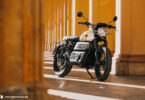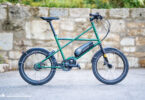With the electric HAN, BYD is bringing a rolling executive chair to the streets of Europe. Its specifications and craftsmanship promise a supreme luxury class feel. Should German brands be wary, or does BYD’s appeal fall short on closer inspection? We put the large electric saloon through its paces to see how it performs.
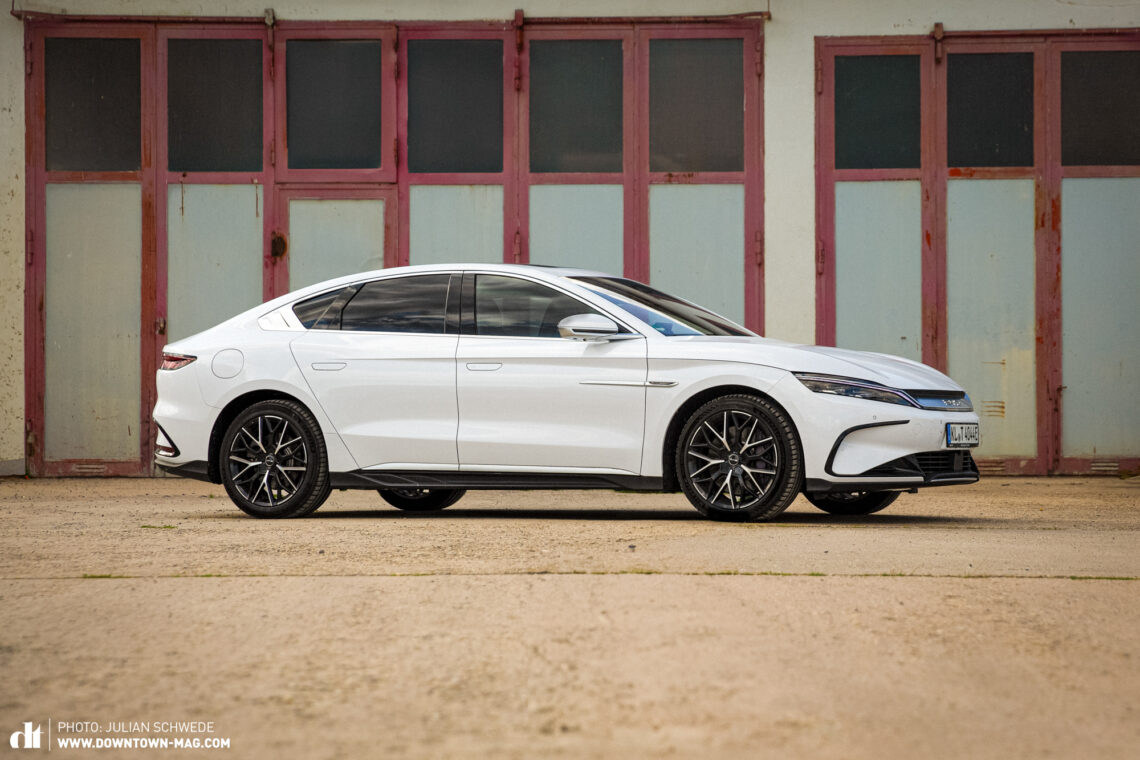
“Build Your Dreams” is the slogan of the Chinese electric car company and shows the self-confident spirit with which BYD are steering their electric car range, not only within their domestic borders but also globally. Their range is steadily growing, with a model for almost every class. Still, the BYD brand doesn’t have a familiar ring to it yet. But, if you take a look at the company’s history, it’s easy to imagine their future impact on the European and American markets. Back in 2015, BYD held the title of the world’s largest electric car manufacturer, only to be surpassed first by Nissan and later by Tesla. While Musk’s company celebrated a remarkable 40% increase in sales in 2022, BYD’s astonishing tripling (yes, 300%) of global sales casts a long shadow over Tesla’s figures.

Take Germany as an example: During our test phase there were a total of 12 BYD dealers – including the Torpedo Group, which supplied our test vehicle. BYD’s plan is to expand this network to more than 100 locations across the country by 2025. The ATTO 3, TANG and HAN models currently on the market will be joined in 2023 by the entry-level DOLPHIN and SEAL models. As well as the SEAL U and new variants of the DOLPHIN in 2024.
Both BYD and Tesla have their own in-house battery production. However, while Musk’s company relies on a variety of lithium-ion cells, BYD focus entirely on lithium iron phosphate (LFP) technology for their Blade Battery. In the Range, charging and consumption section, we look at the advantages and disadvantages of each approach. Tesla are also working on new batteries, such as the lithium manganese iron phosphate technology that will be used in the upcoming standard version of the Model 3.
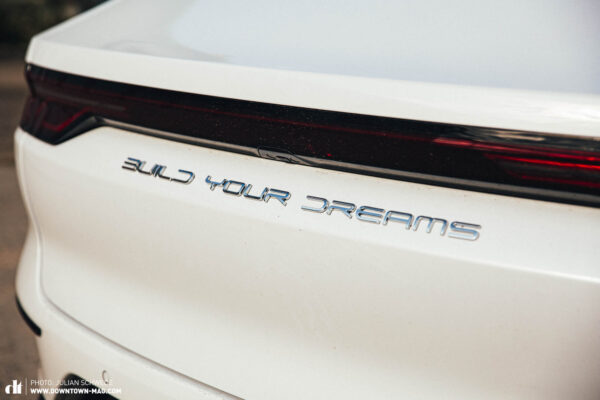
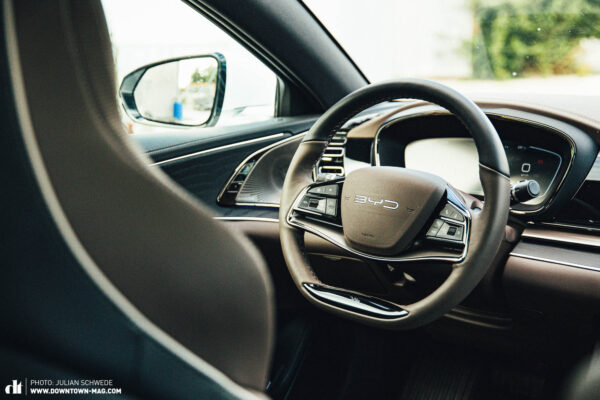
Our test car is the top-of-the-range HAN model, named after the Han Dynasty, an early heyday of Chinese culture. With a length of almost 5 m, this classic saloon has an imposing presence and is available in two fully equipped versions with prices starting from € 70,805. In Germany, at least, these can be reduced thanks to the ongoing environmental bonus.

The BYD HAN up close – Affordable luxury on wheels
Stately and large, two characteristics that aptly define the BYD HAN. With a generous 5 m length and an impressive 2.13 m width, this classic four-door saloon makes a significant impression. A real road cruiser? Not quite, because despite its large exterior dimensions, the HAN exudes a sporty attitude. This is partly due to its relatively low height of just 1.5 m and its boldly styled front, reminiscent of the KIA EV6. All in all, the Chinese luxury car pays subtle homage to familiar designs. Hints of the Porsche Taycan at the rear and a dash of the Mustang on the C-pillar add to the HAN’s distinctive character, but ultimately it retains its individuality and convinces with its skilful design. Particularly noteworthy are the headlights, which BYD refers to as “streamers”, and the light strip that adorns the rear, which at night makes the HAN look a little wider and more sporty than in daylight.
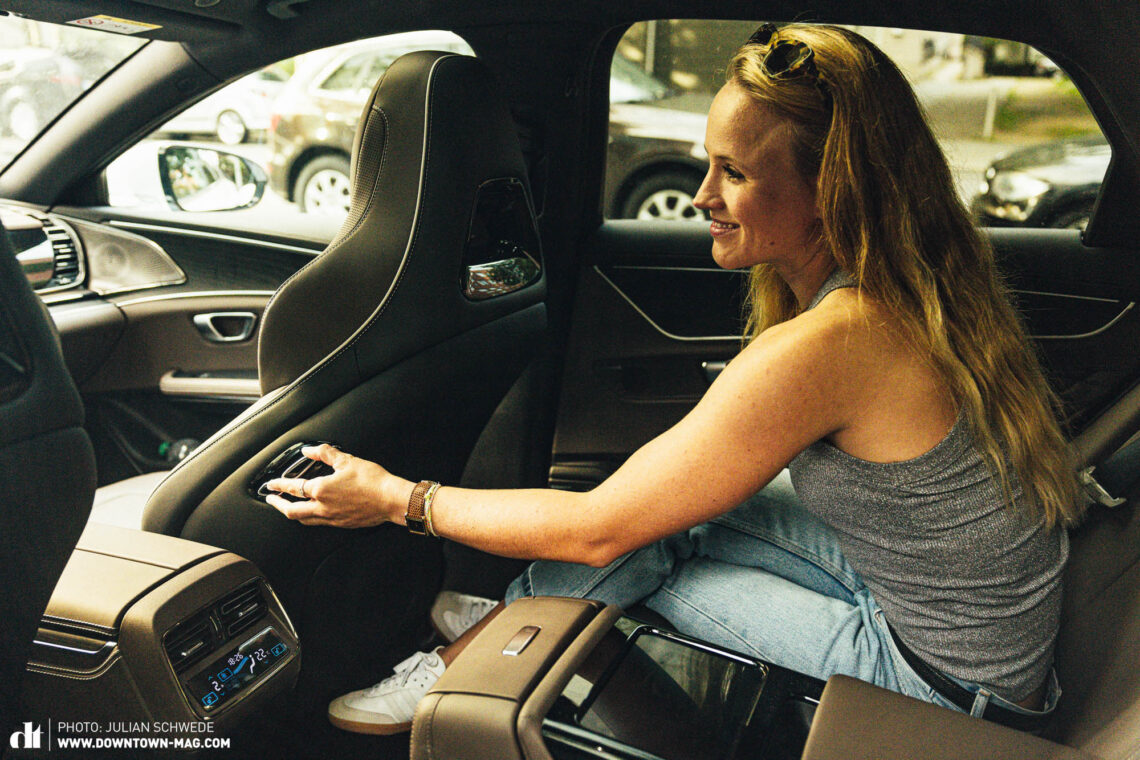
Inside the car, after using the futuristic retractable door handles, your attention is immediately drawn to the large central screen and the transmission tunnel, which is remarkably large for an electric car. Bringing us back to the self-confident spirit… A closer look reveals an extremely refined interior that lives up to its luxury billing. Fine brown nappa leather as far as the eye can see, harmoniously complemented by beautifully finished, almost black, scratch-resistant imitation wood – a successful colour combination that looks even more striking in the dark thanks to the ambient lighting. The rich piano lacquer finish on the front passenger airbag, while undeniably stylish, tends to attract fingerprints and is best seen in pristine condition. There is, of course, a modest amount of cheap plastic, cleverly concealed in the lower parts of the doors and footwells. In terms of aesthetics, the BYD HAN exudes luxury and elegance. However, overall outward visibility suffers from the sheer size of the car. It’s safe to say that this car is probably not the ideal choice for a driving school training vehicle. 😉
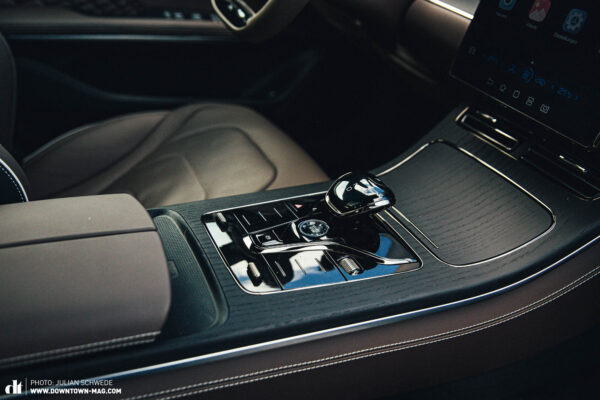
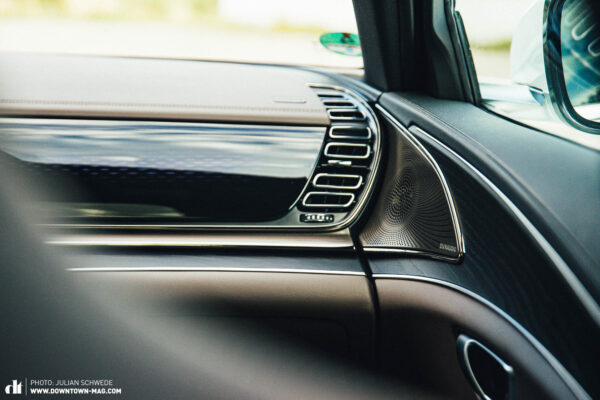
BYD’s luxury saloon isn’t just visually striking, the Chinese electric car company also excel in the art of craftsmanship, on par with German premium manufacturers such as Audi, BMW and Mercedes. The interior design and haptic experience provide a sensation similar to the refinement found in luxury cars such as Bentley or Maybach. The HAN has the aura of a mobile fortress, ready to take on the world’s most prestigious premium brands.
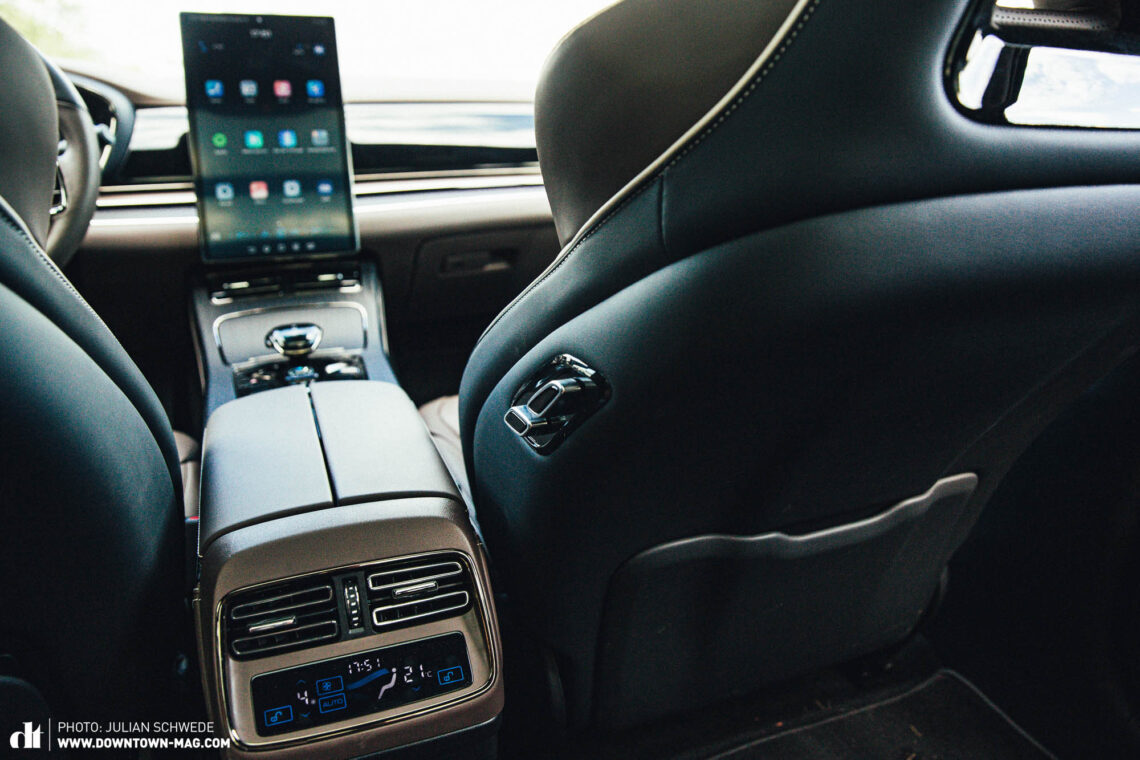
The features of the BYD HAN: All inclusive!?
Everything is included in the BYD HAN except the colours Emperor Red and Al Blue. The car comes in two versions. Our model is the executive version with a price tag of € 70,805, while the emerald green edition, priced at € 74,375, differs from our test car in only three aspects: green velour and leather upholstery, and green carbon trims. Also, in the more expensive version the two inductive smartphone chargers deliver 50W instead of 15W.
The sporty front seats are fully electric and offer lumbar support. Even the backrests of the rear seats can be electrically adjusted. Heating and cooling is available for all four seats. The seatbelts in the front tighten electrically after you buckle up, which gives you an extra sense of security. For people taller than about 175 cm, the seats are very comfortable and offer plenty of lateral support. However, shorter people may find the side bolsters are uncomfortably close to their upper arms and shoulders. Meanwhile, the panoramic sunroof ticks all the right boxes. The large opening allows your hair to blow in the wind, while the sunblind shields you from the sun on particularly hot days. The HAN also features a heat pump to reduce the increased power consumption in cooler weather.

BYD don’t hold back when it comes to infotainment. For the driver, there is a 12.3″ TFT instrument display and a head-up display. A central 15.6″ touchscreen can be rotated for use in portrait or landscape mode. There are also two screens in the rear. Rear-seat passengers can adjust the seat position, sunroof and ambient lighting, as well as the temperature, airflow and indeed the entire infotainment system. Thanks to two IsoFix mounts in the rear, even the youngest passengers can join in – or drool all over the display 😉
Two 15W wireless smartphone charging points are conveniently located at the front, one under and one in front of the centre armrest. There are also 4 USB ports at the front and 2 more at the rear. The only USB-C socket is reserved for front seat passengers. The hotspot, powered by the standard 4G module, is available for all passengers to use.

Please take a seat! Ideally, settle into the right rear seat. BYD have meticulously designed the HAN as a sporty chauffeur-driven EV, with the right rear seat taking the prime position.
While the entire saloon offers a spacious and open feel across all seats, the rear really shines in terms of roominess. The legroom is exceptional and the seats themselves offer a blend of comfort and a distinctly high quality feel. Those in the right-hand rear seat also can adjust the front passenger seat. Controls on the backrest of the front passenger seat allow it to be moved, yielding even more legroom. It’s worth noting, however, that the generous legroom doesn’t hide the fact that the battery configuration in the undercarriage raises the floor in the rear, making it difficult to sit upright without your knees ending up quite high.
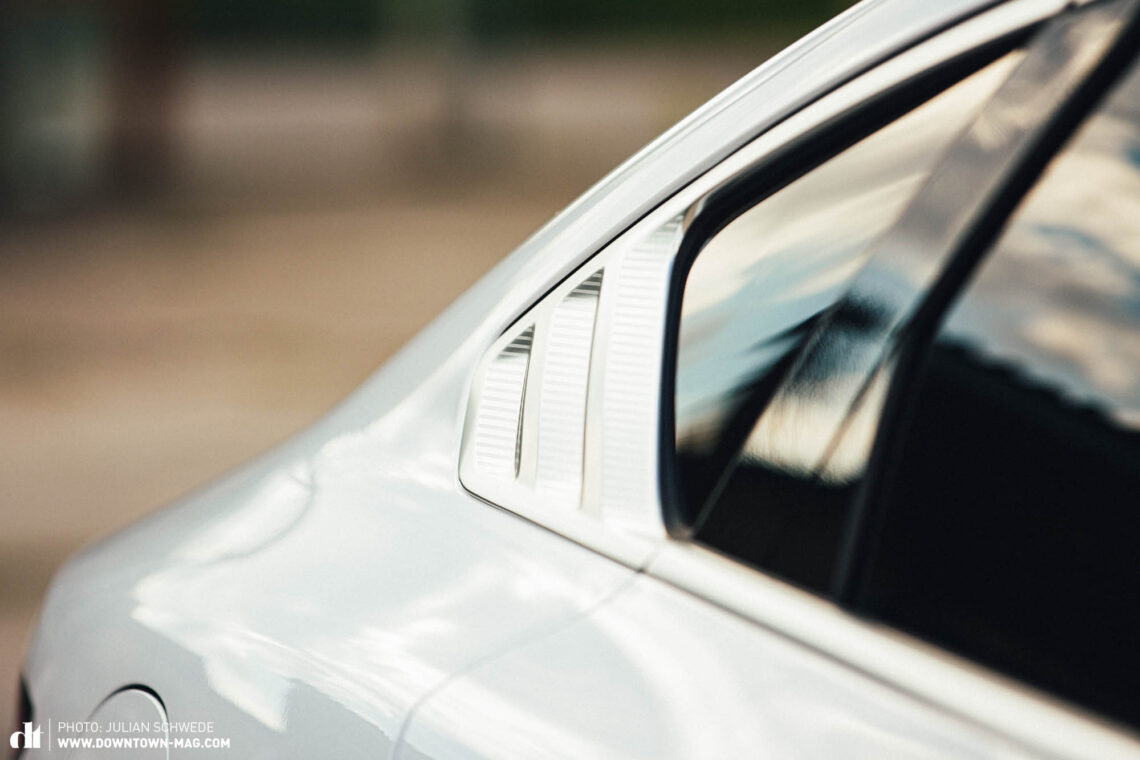
So what’s missing from the BYD powerhouse? A tow bar and a sufficiently spacious boot. While the absence of the tow bar is probably tolerable in most cases for a spacious saloon, the small boot severely limits the car’s practicality. Planning a family holiday with 4 or even 5 people becomes a challenge with only 410 litres of luggage space. Furthermore, there isn’t a frunk. The shallow compartment under the boot floor doesn’t even offer enough space for the charging cable.
BYD HAN assist functions – Room for improvement
The BYD HAN doesn’t skimp on display space. Unfortunately, this doesn’t translate into an equally comprehensive range of assist functions. Although the car offers emergency brake assist, lane change assist (LCA), rear collision warning (RCW), rear cross traffic alert (RCTA) and an impressive total of 4 front and 4 rear parking sensors, you won’t find a proper self-driving feature. Also, the steering assist tends to be a little nervous and occasionally intervenes abruptly, which can lead to precarious situations. Intelligent Cruise Control (ICC) offers some improvement, but only when road markings are clear and visibility is good. Adaptive cruise control (ACC), on the other hand, is very sensitive and sometimes overly cautious when trying to keep up with fast-moving traffic. More customisable settings, beyond simply adjusting the distance to the car in front, would have been welcome. Overall, these assists are set up to detect potential hazards at a very early stage, and while their warnings are mostly useful, they can be disabled.
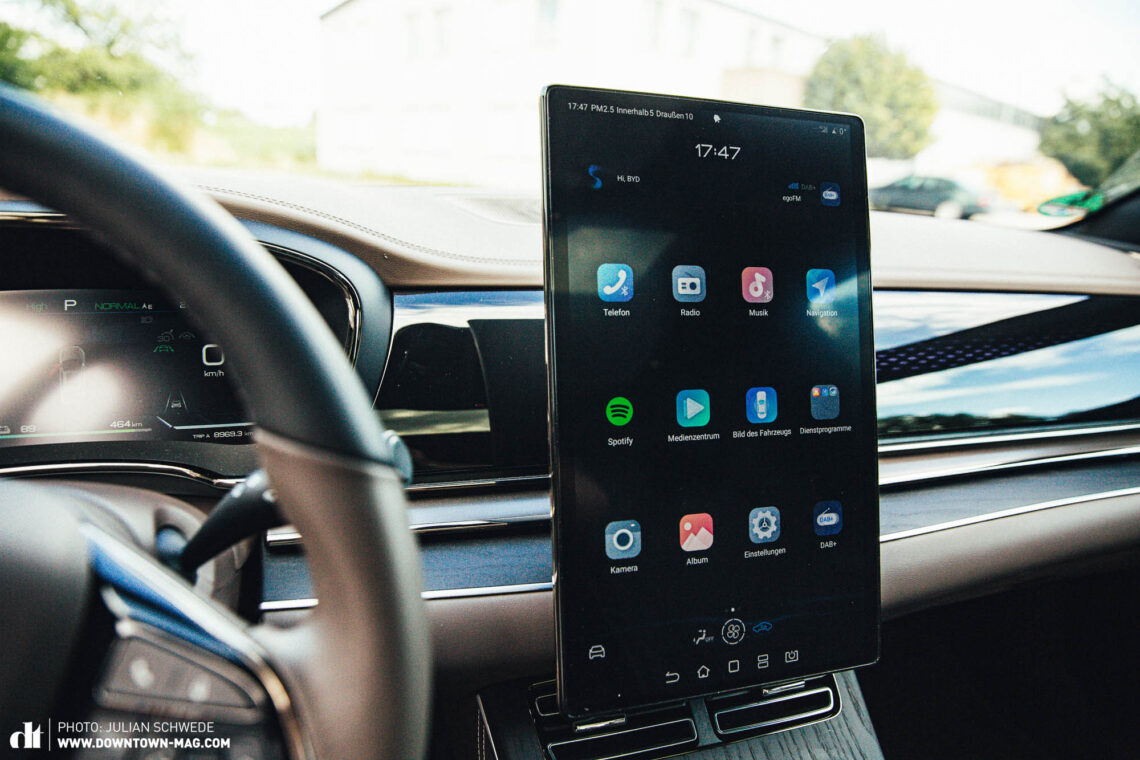
In general, the infotainment system and the software behind it seem to be a work in progress. After entering the car, the boot-up process takes a full minute, unlike other cars that are fully operational as soon as the door is opened, with music already playing and your phone connected. Once the BYD system is fully active, it is fast and responsive in almost all scenarios. It does, however, take a little patience to display the distance map, an undeniably valuable feature. On the other hand, the navigation system is quite fast. The large screen offers an optimal view in portrait mode, especially as in landscape mode the left edge of the screen is partially covered by the steering wheel or your right hand. If you need to make an extra stop to recharge, perhaps because the weather is getting worse or you’ve exceeded your planned speed, the navigation system won’t automatically include it in the route. However, charging stations along the route can be manually displayed and selected as a destination. Disappointingly, the navigation commands didn’t work on the head-up display in our test car. On a positive note, though, the traffic sign recognition (TSR) is very reliable, although it stumbles over gantries. Unfortunately, the speed limit is not yet transmitted to the cruise control. Perhaps a feature in the works?
The operation and logic of the system is largely intuitive. However, there were times when we had to think really hard about how to get back to the navigation or entertainment screens, especially when navigating through deeper menu levels. The way back isn’t always consistent, taking our attention off the road a few times.
Curiously, while the BYD HAN is immaculately finished, the infotainment system has a slightly unfinished quality in certain aspects. We came across some completely new words and amusingly literal English translations. While the meaning behind these word creations can usually be deduced from the context, a premium car should avoid such mistakes. The voice control in our test car only worked in English, and the ability to switch to Android Auto or Apple CarPlay remains elusive due to a lack of support (for now?).
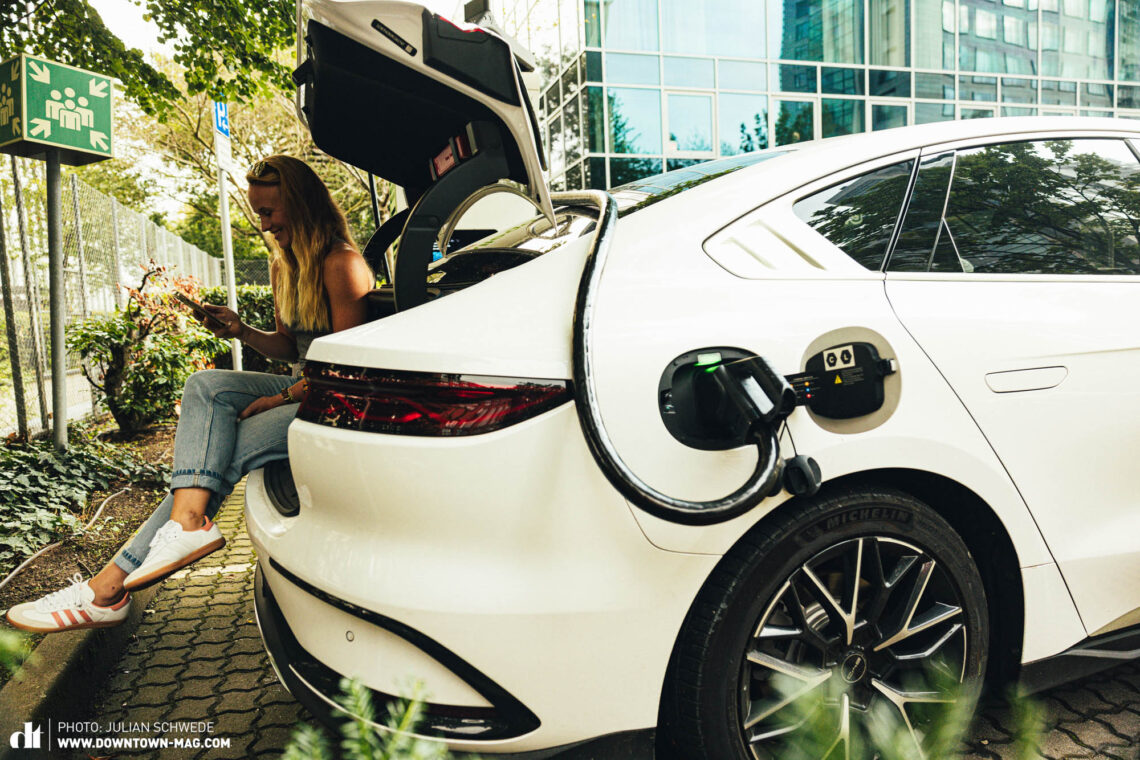
The Dynaudio sound system, meanwhile, is a real treat, allowing the occupants to relax in their mobile executive chairs, enveloped in music. On the other hand, the indicator sounds emanating from somewhere near the left wing mirror have an almost toy-like quality that is rather cringeworthy.
The range of camera views proves invaluable for manoeuvring the car’s considerable size, especially when parking. The bird’s eye view, complete with a transparent mode, is particularly useful, and not just for mitigating encounters with those pesky kerbs.
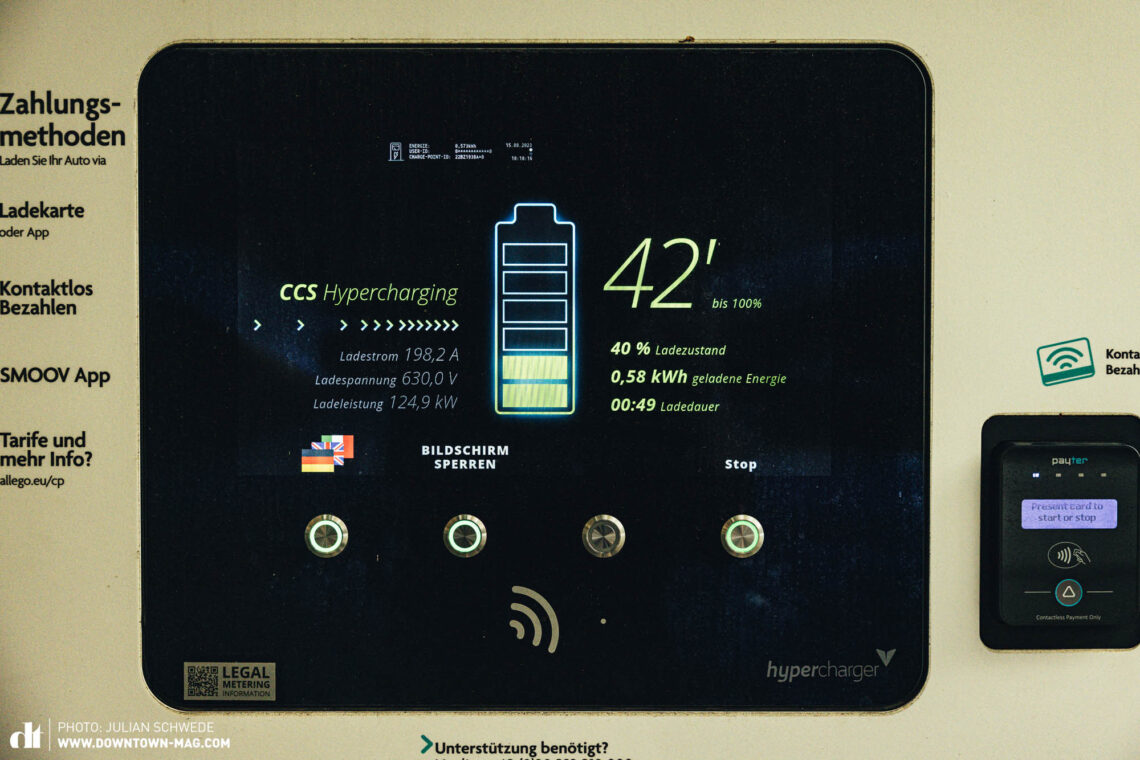
BYD HAN – Range, charging and consumption
Equipped with an 86 kWh battery, the BYD HAN doesn’t quite match the battery capacities of its German competitors in the luxury class. In terms of cell chemistry, BYD’s Blade Battery relies exclusively on the previously mentioned lithium iron phosphate technology, commonly referred to as LiFePO or LFP. This subset of lithium-ion technology offers specific advantages such as reduced susceptibility to thermal instability and overheating, factors that should significantly minimise the risk of fire. It should also provide a claimed extended lifespan of over 2,000 charge cycles. BYD go one step further and advertise the Blade Battery with a potential of up to 5,000 charge cycles, backed up by an 8-year warranty or 160,000 km mileage – impressive!
A critical consideration for electric cars, especially for a touring saloon, is the charging infrastructure. In this area, the BYD HAN made concessions on several fronts. Despite the use of 800 V technology, the maximum DC charging capacity remains at 120 kW. We were unable to find an option to pre-heat the battery in the menu, nor was it clear whether this would be done automatically when navigating to a charging station. As a result, we encountered a wide range of charging capacities, even in high summer temperatures. The claimed 120 kW was often only maintained for a few minutes. After 2.5 hours of motorway driving, the fastest charge we were able to achieve was 120 kW up to a state of charge (SoC) of 60%. Realistically, though, the BYD HAN averages between 70 and 80 kW charging during summer – an insufficient rate to be considered suitable for long-distance driving. However, the luxury model also suffers from a limitation that no serious EV should have in 2023: It only charges on a single phase at wallboxes and public AC chargers. During overnight charging, the maximum increase in charge level is around 50%. That’s not acceptable.
On the other hand, the BYD HAN delivers a convincing performance in terms of its range. No doubt helped by the remarkably low Cd value of 0.23. During an extended motorway journey with cruise control set to 125 km/h, energy consumption stabilised at around 17 kWh/100 km. That’s almost exactly the same as the predicted range of 500 km and very close to the WLTP figure of 521 km. With a more restrained driving style and limited use of the motorway, a range of 600 km seems achievable in summer. In winter the range could be reduced to around 400 km.

For executives and frequent drivers: A mobile fortress
Confident is probably the best way to describe the handling of the BYD HAN. Despite the car’s size, you feel well integrated behind the elegant, if slightly overloaded, steering wheel and quickly find a comfortable seating position thanks to the many adjustment options. Unless you are shorter than 175cm, then the seats can be a problem. Not only is the car’s road-holding very solid due to its weight of 2,250 kg, but the firm yet comfortable suspension effectively minimises body roll even when cornering fast. However, the HAN does have a tendency to judder over transverse joints, which can be annoying on long stretches of uneven road – far from the image you might associate with a chauffeur-driven vehicle. The Imperial Battleship’s 380 kW (517 hp) of power is transferred to the road via permanent four-wheel drive, although it doesn’t quite have the oomph of a Tesla Model 3 or KIA EV6. Still, it’s sure to put a smile on the faces of those switching from traditional combustion engines. For dedicated electric car enthusiasts, however, the BYD may feel a little less powerful than its specifications suggest. The minimal understeer blends in well with the large saloon’s safe driving characteristics. Activating Sport mode via a switch on the console, the throttle response is noticeably more immediate and the 5 metre long car shows what it can do, delivering uninterrupted power up to a top speed of 180 km/h – electronically limited, of course, and almost amusingly slow compared to German luxury cars. And yet not bad, especially for an electric car. This approach helps to keep power consumption within reasonable limits even at higher speeds. In addition, the pleasantly low level of background noise in the car remains unchanged. Rattling, shuddering, grinding or wind noise? Not in this rolling fortress.
Our conclusion on the BYD HAN
Impressive craftsmanship, confident on the road, yet marred by a few weak points that are hard to forgive – this sums up the BYD HAN. As a large chauffeur-driven car, this luxury saloon achieves excellence on many fronts, combining impeccable quality, luxurious interiors and exceptional driving performance. In other areas, however, BYD fail to live up to their high standards. The infotainment system is underdeveloped, the boot is inadequate and the charging performance is well below acceptable standards.
Tops
- impeccable craftsmanship
- spacious feeling
- modern design and form language
- superior road holding
Flops
- lack of self-driving feature and nervous steering assist
- shallow, undersized boot
- weak charging performance (DC and AC)
- unfinished software (messy translations)
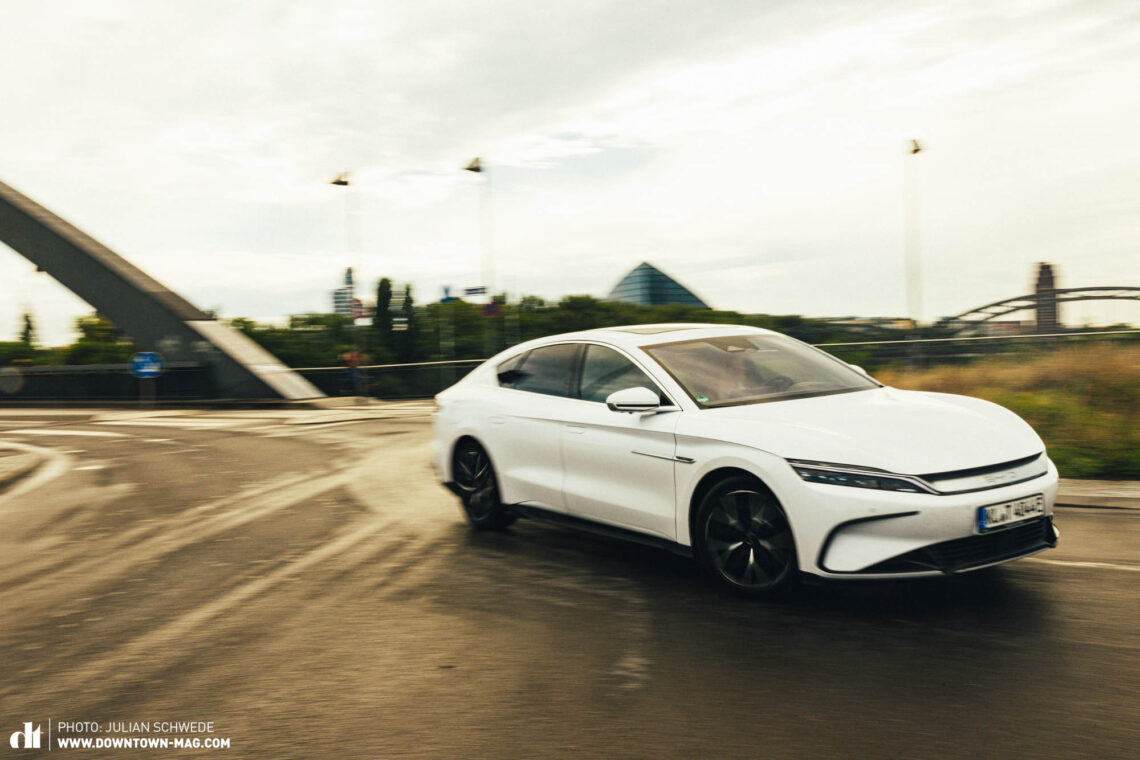
Words: Patrick Gruber Photos: Julian Schwede





